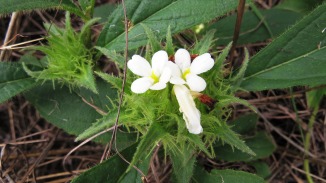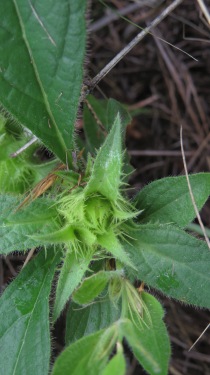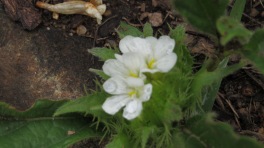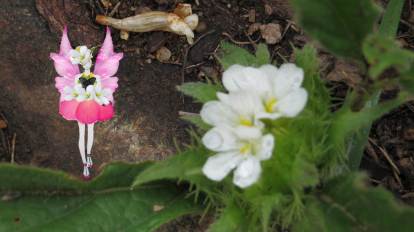 I love the name: “Prickle Head”, it sounds a bit like me before I’ve had my first cup of coffee in the morning! I seem to be particularly drawn to the very tiny flowers or those with unusual shapes or structures when walking through the woodland / grassland around our home looking for the next flower to research and write about. I found these Crabbeas growing in the veld a few metres from the kitchen door, and then I discovered them all over the veld nestling between rocks and decaying logs in many sheltered places in the rocky woodland on the hill next to our house.
I love the name: “Prickle Head”, it sounds a bit like me before I’ve had my first cup of coffee in the morning! I seem to be particularly drawn to the very tiny flowers or those with unusual shapes or structures when walking through the woodland / grassland around our home looking for the next flower to research and write about. I found these Crabbeas growing in the veld a few metres from the kitchen door, and then I discovered them all over the veld nestling between rocks and decaying logs in many sheltered places in the rocky woodland on the hill next to our house.
 This is a perennial herb that is covered with hairs, hence the species name – hirsuta. It is a low growing plant reaching a height of about 200mm. The sessile leaves are elliptic to ovate and are about 300mm long and about 20mm wide. They are dark green on top and pale green underneath with prominent veins and again, covered in highly visible hairs. The margins are generally entire to mildly undulating.
This is a perennial herb that is covered with hairs, hence the species name – hirsuta. It is a low growing plant reaching a height of about 200mm. The sessile leaves are elliptic to ovate and are about 300mm long and about 20mm wide. They are dark green on top and pale green underneath with prominent veins and again, covered in highly visible hairs. The margins are generally entire to mildly undulating.
The flowers consist of 5 white petals with a bright yellow centre borne within spiny bracts which gives it the common name of “Prickle Head”.  These subsessile (no visible stem) flowers are densely clustered within the spiny bracts and the flowers open a few at a time. The spiny bracts remain once the flowers have faded and died.
These subsessile (no visible stem) flowers are densely clustered within the spiny bracts and the flowers open a few at a time. The spiny bracts remain once the flowers have faded and died.
Prickle Heads can be seen in grassland, woodland and rocky slopes, usually in sandy or stony soils from Malawi, Zambia, Angola through Namibia, Zimbabwe, Botswana, Swaziland and South Africa. They form part of the Acanthacae family and were named after George Crabbe(1754 – 1832) a nature lover and poet.
Hazel Saturnfilter
 She is a trouble maker . She can only be seen on midsummer’s eve. She wears black feathers and rose petals and has pale pink wings like a cicada.
She is a trouble maker . She can only be seen on midsummer’s eve. She wears black feathers and rose petals and has pale pink wings like a cicada.





You must be logged in to post a comment.